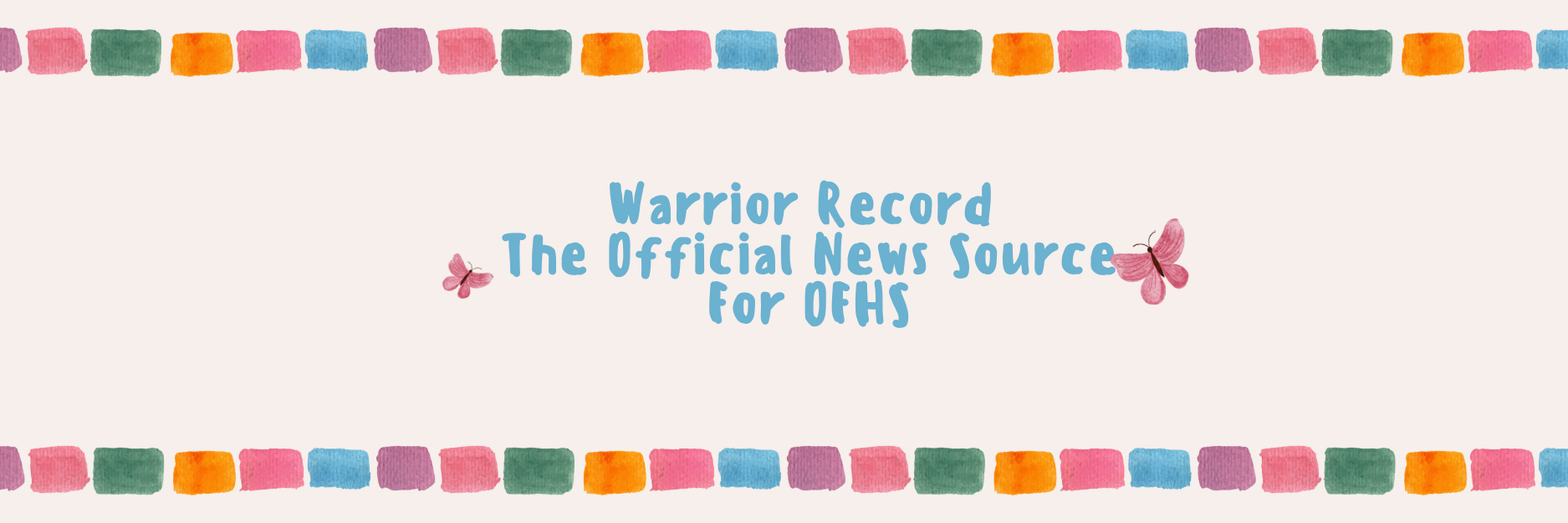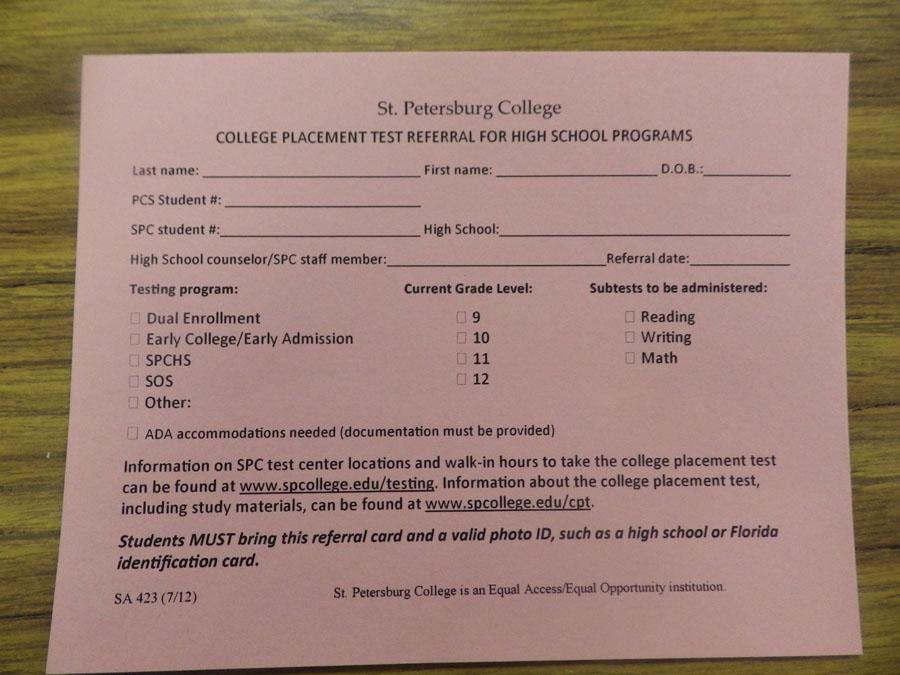Preparing for P.E.R.T.
This card is given to students when they apply to take the PERT test by their guidance counselor. Students must take the card to their exam or they will be unable to take the test at all. The card is used for all students, whether they’re taking Dual Enrollment, Early College or are planning on attending Saint Petersburg Collegiate High School. The card can be taken to any SPC campus that administers the test.
The Postsecondary Education Readiness Test, called P.E.R.T. for short, is necessary for students who would like to take Dual Enrollment or Early College.
For current high school students there are several ways to graduate. Most high school students go the traditional route and decide to go to their local high school and enroll in honors and/or AP (advanced placement) classes. There are two other alternatives for students that they may not be aware of. Students can take dual enrollment or go to early college.
Dual enrollment is the alternative for students who may want to stay at their local high school but also prepare for college early. Dual enrollment is free and allows students to take a few classes at their high school, leave early and take college classes at SPC.
Next, students have the option of Early College, also known as Collegiate High School. Collegiate high school is offered at the Saint Petersburg Gibbs Campus. The name of the school is shortened and called Saint Petersburg Collegiate High School (SPCHS). Early College allows high school students to take all of their classes at SPC. Students, who graduate from SPCHS and fulfill all requirements, can graduate with a high school diploma, an Associate in Arts degree and a Bright Futures scholarship. Students can enroll starting in 10th grade (Pre Collegiate) and no later than 11th grade. A total of 230 students make up the entire student body and in the case of more contenders for the spot, students will be chosen at random. “In order to do Early College it’s required to have H.O.P.E. and World History completed and have at least an unweighted 3.0 GPA” said Ms. Polizzi. SAT, ACT or PERT scores also must meet requirements.
Guidance counselors are the starting blocks for students who may want to enroll in these classes. Ms. Nymark, Ms. Polizzi, and Mrs. Jackson are the sources for students in 10th grade who want to enroll. Ultimately, it is the student’s responsibility to take the final steps in enrolling in the courses.
Brianna Collins, 12th grade, said that she chose not to do dual enrollment or early college because, “I didn’t want to rush high school.” She said that if she had to choose one it would’ve been dual enrollment. “I would’ve taken a CORE class like math or science.”
Hannah Miller, 10th grade, said that she hadn’t thought about doing either yet. “With early college I think they put your name in a lottery to decide whether or not you will be able to attend.”
Whatever decision students decide on they will inevitably shape the student’s future.
Your donation will support the student journalists of Osceola Fundamental High School. Your contribution will allow us to purchase equipment and cover our annual website hosting costs.


